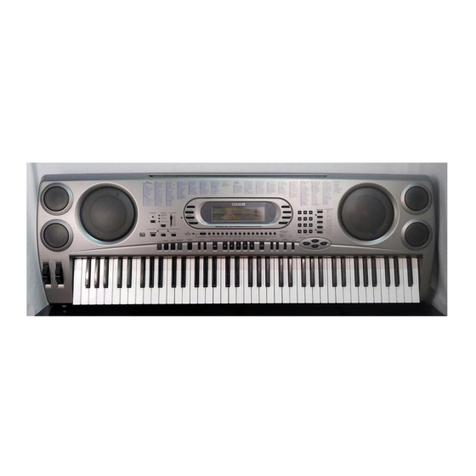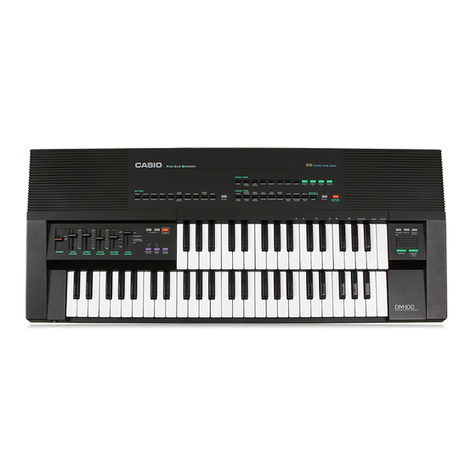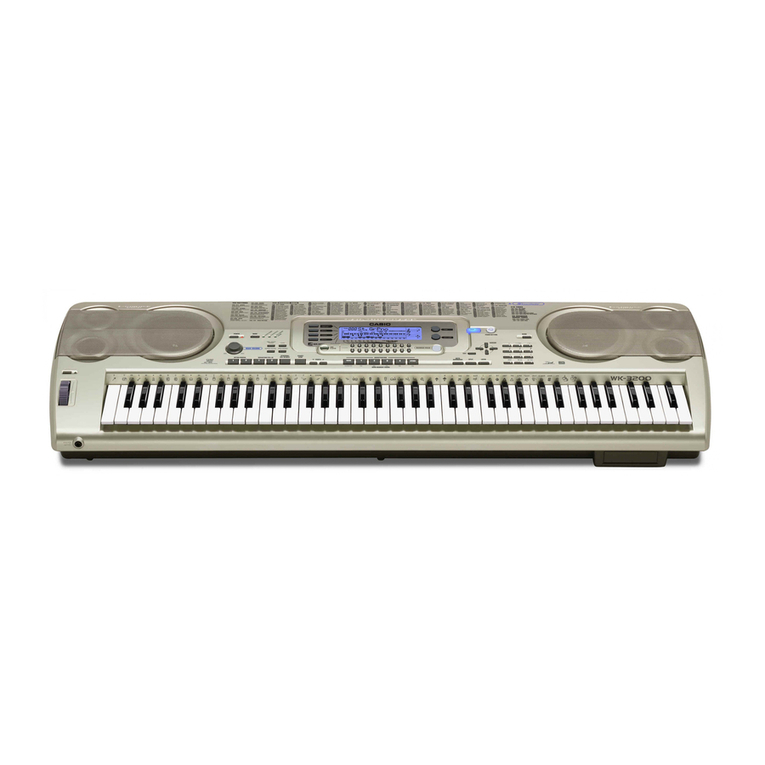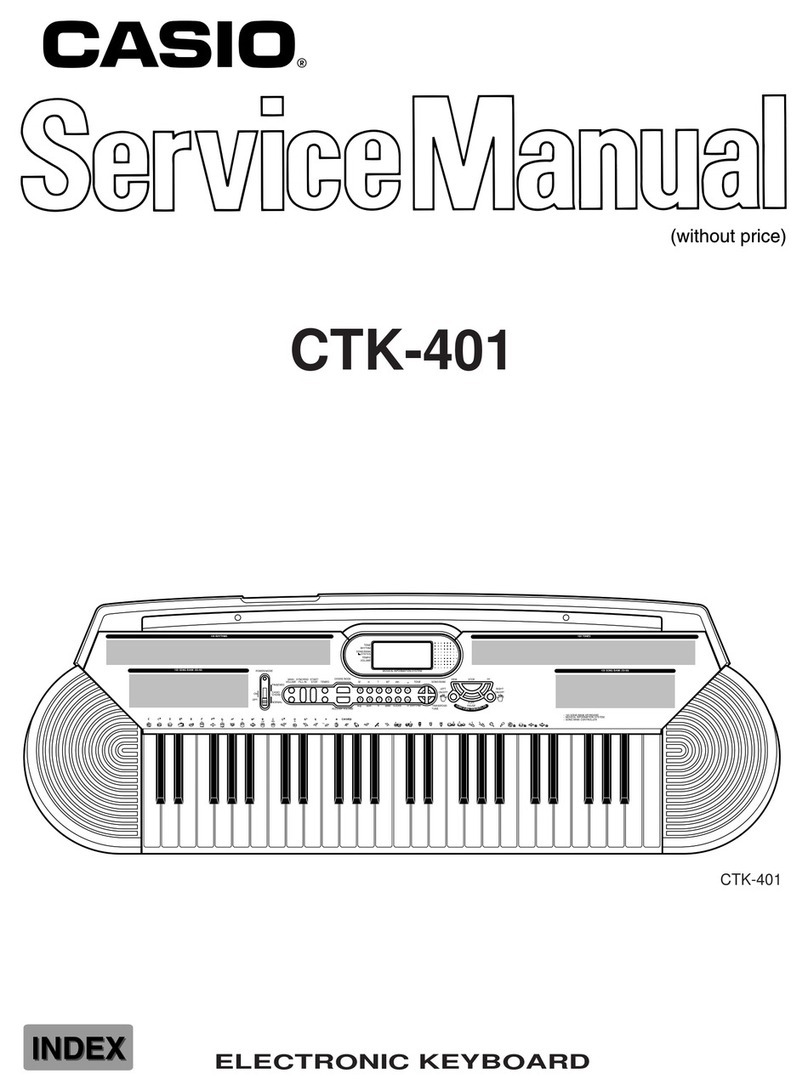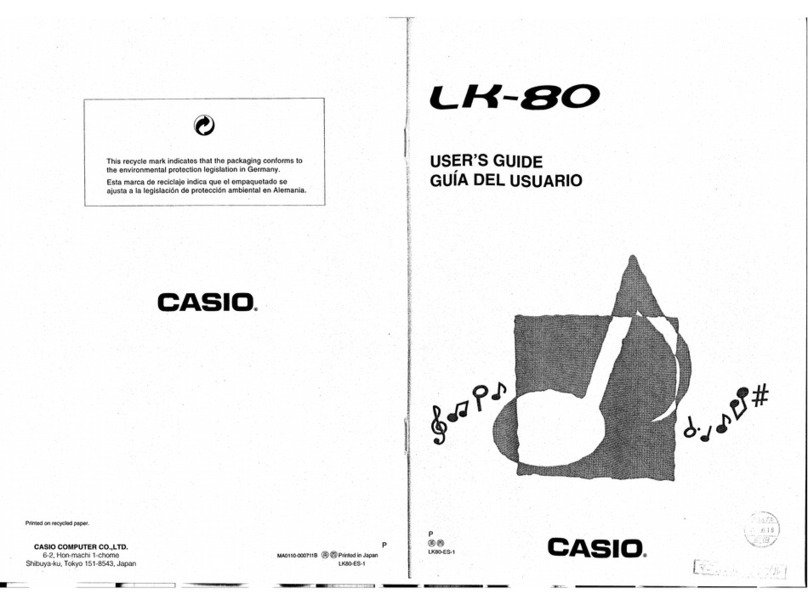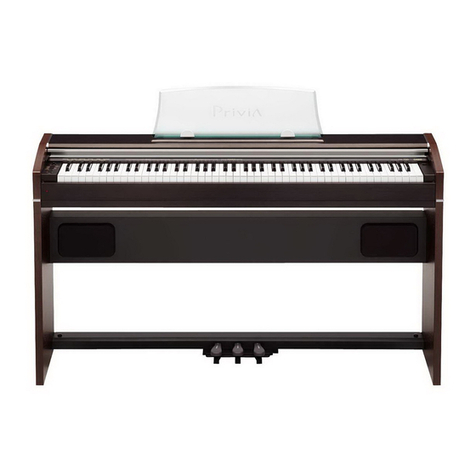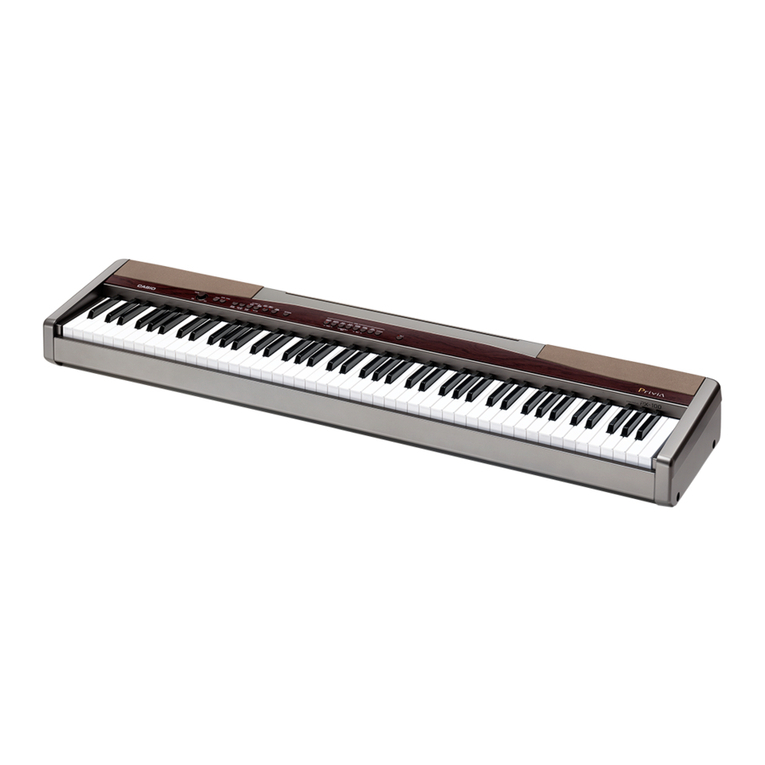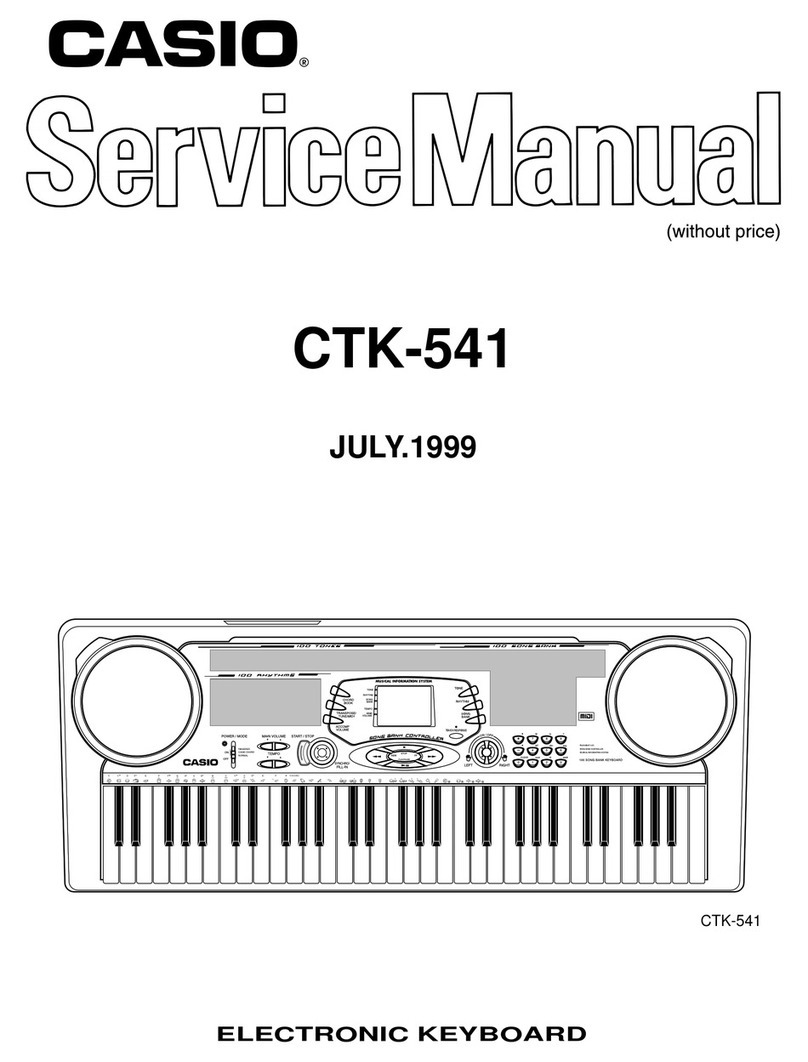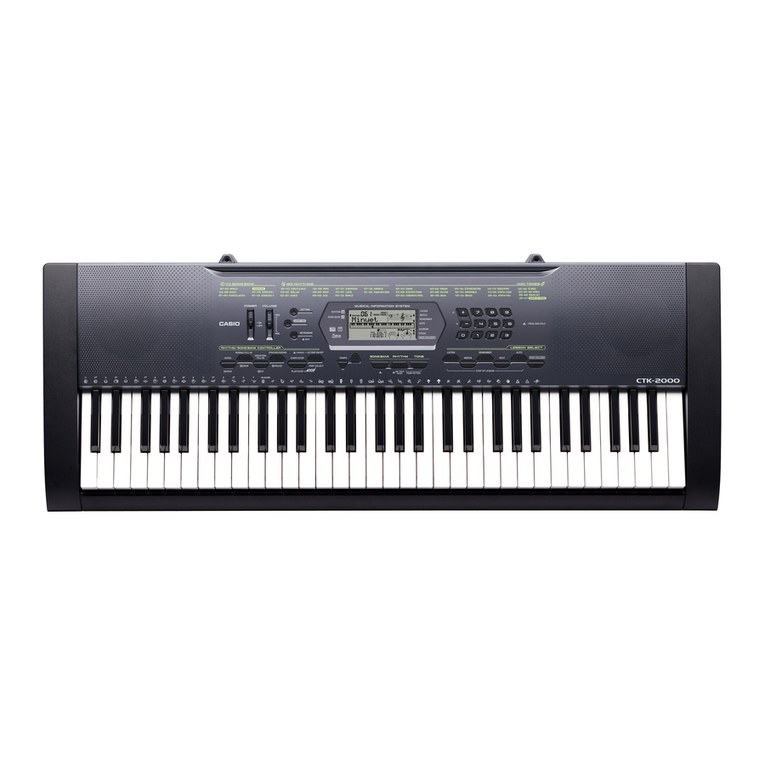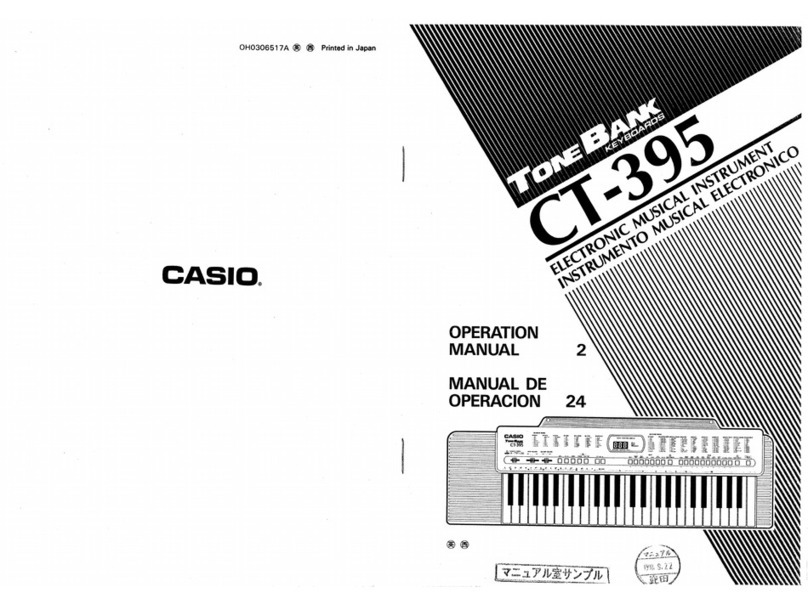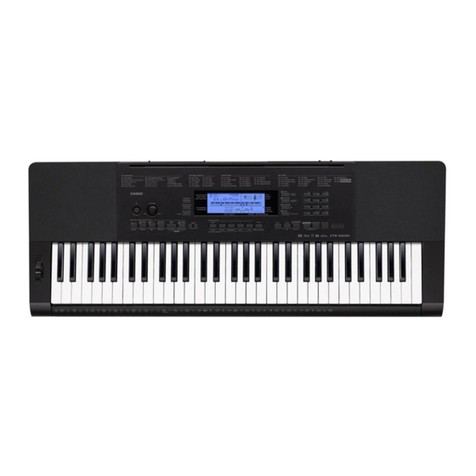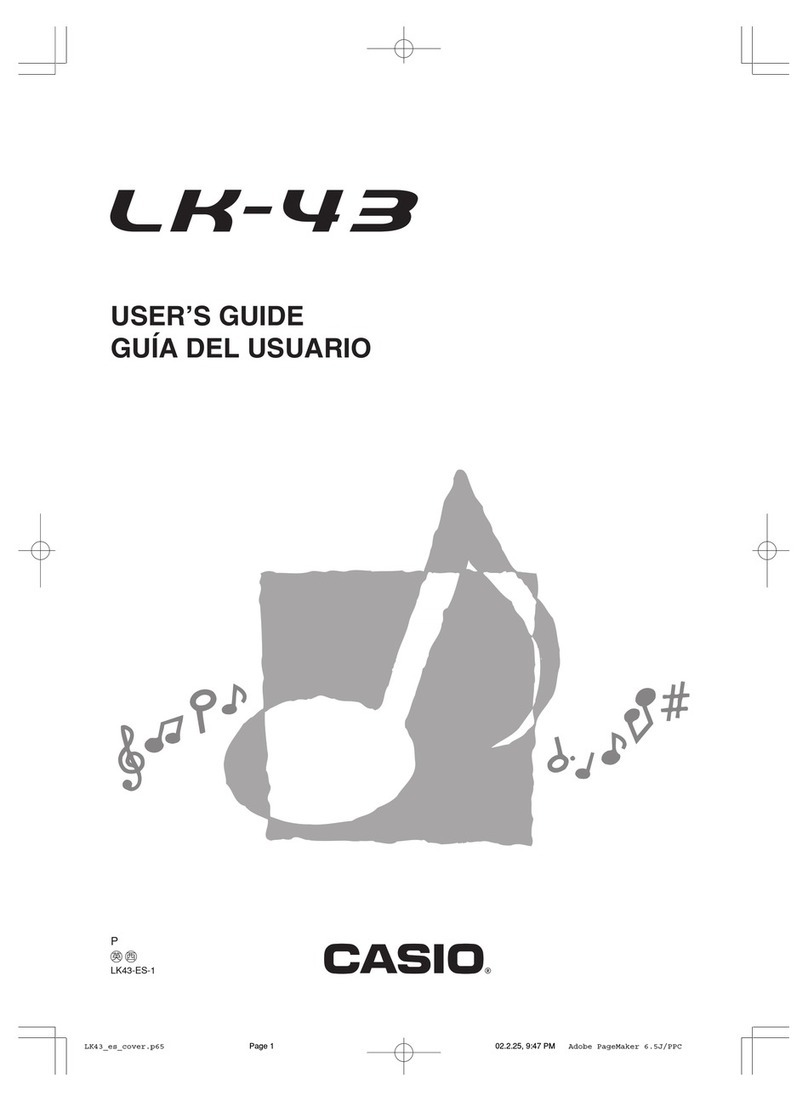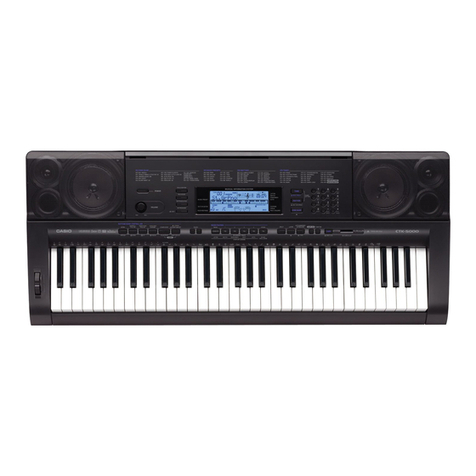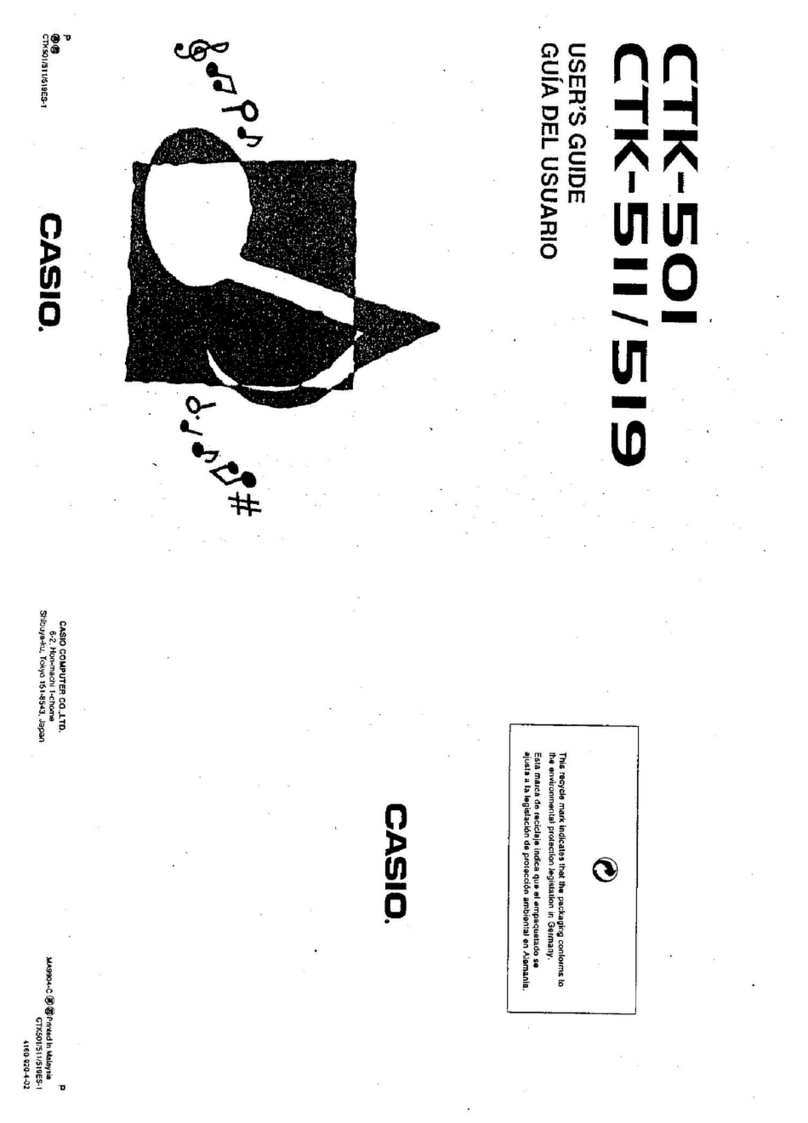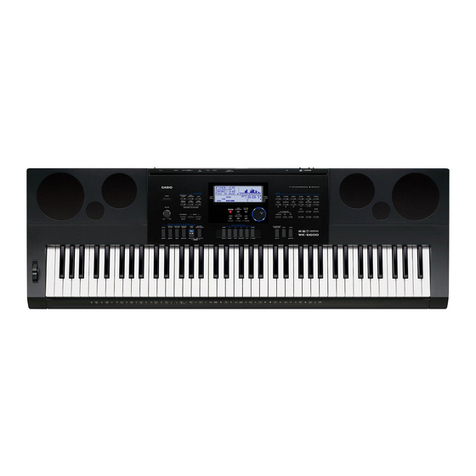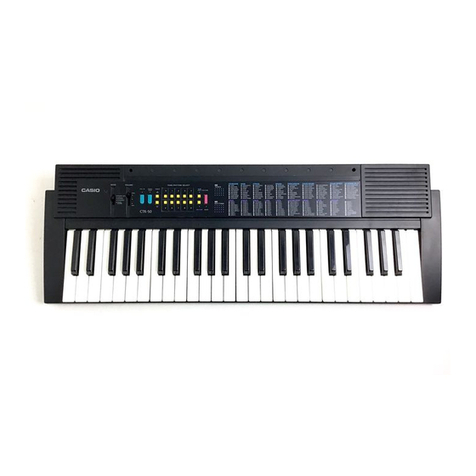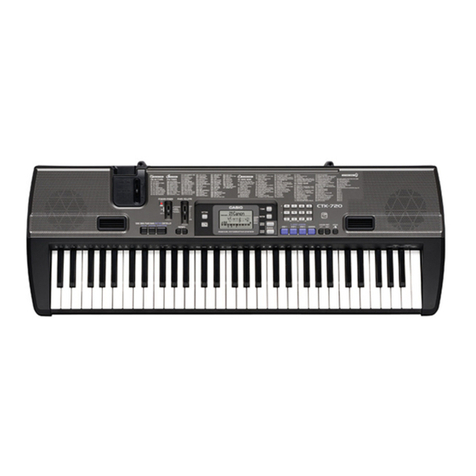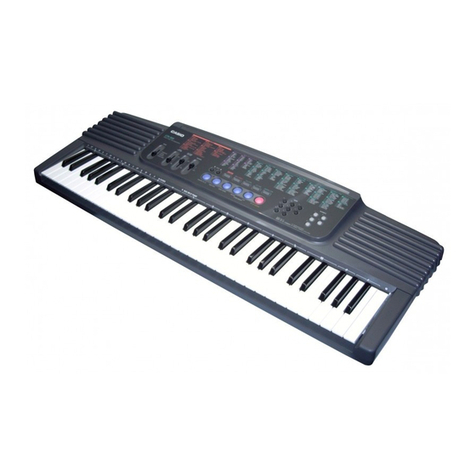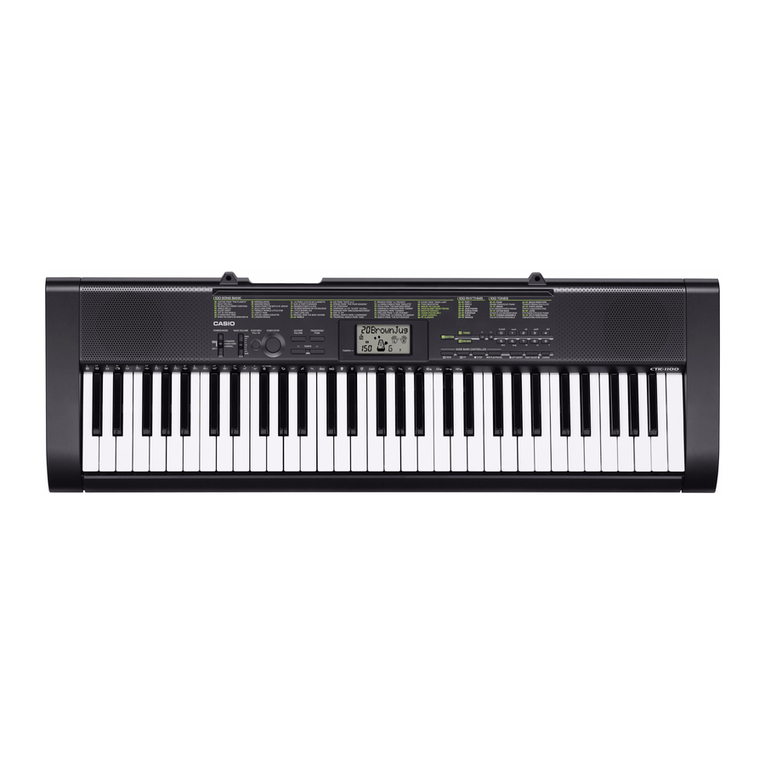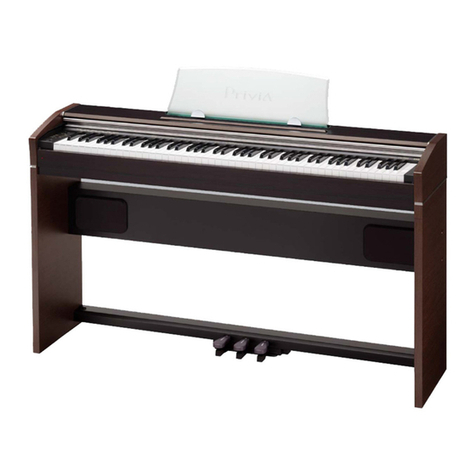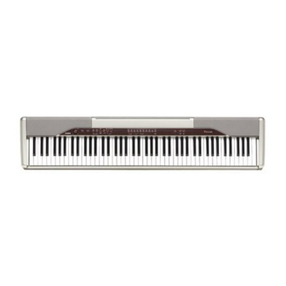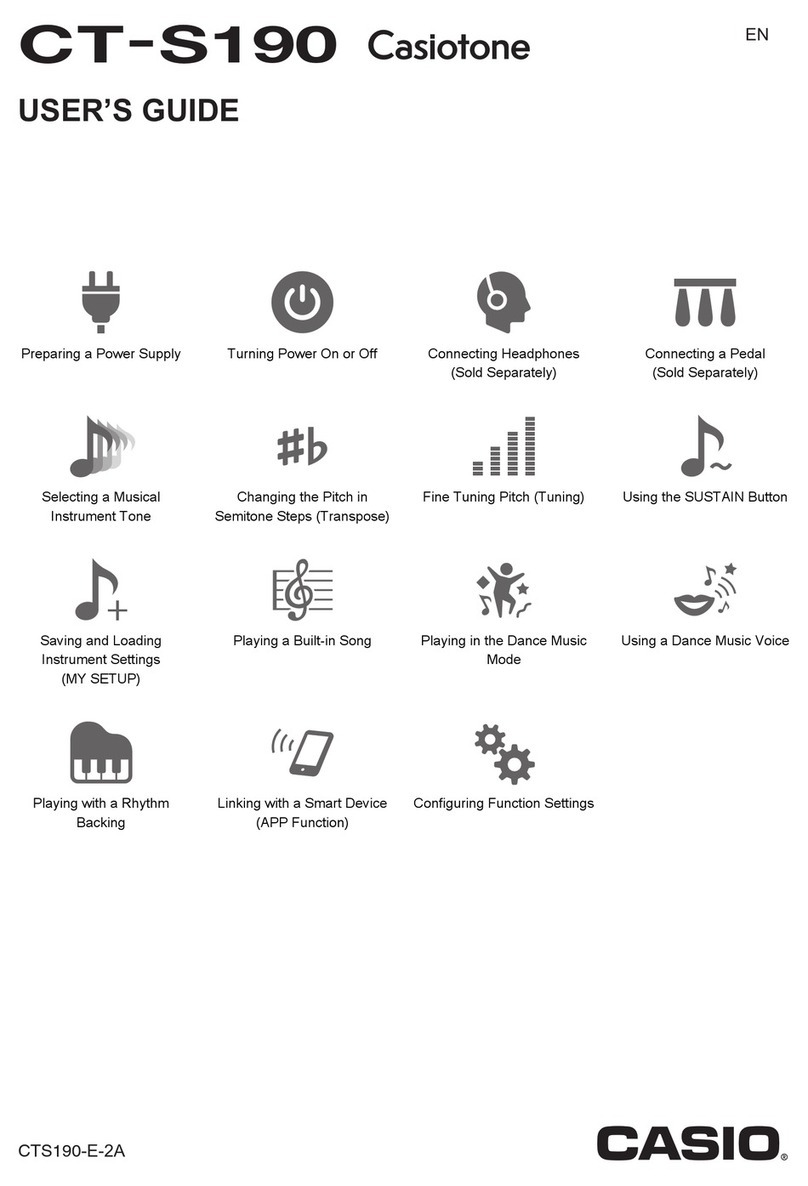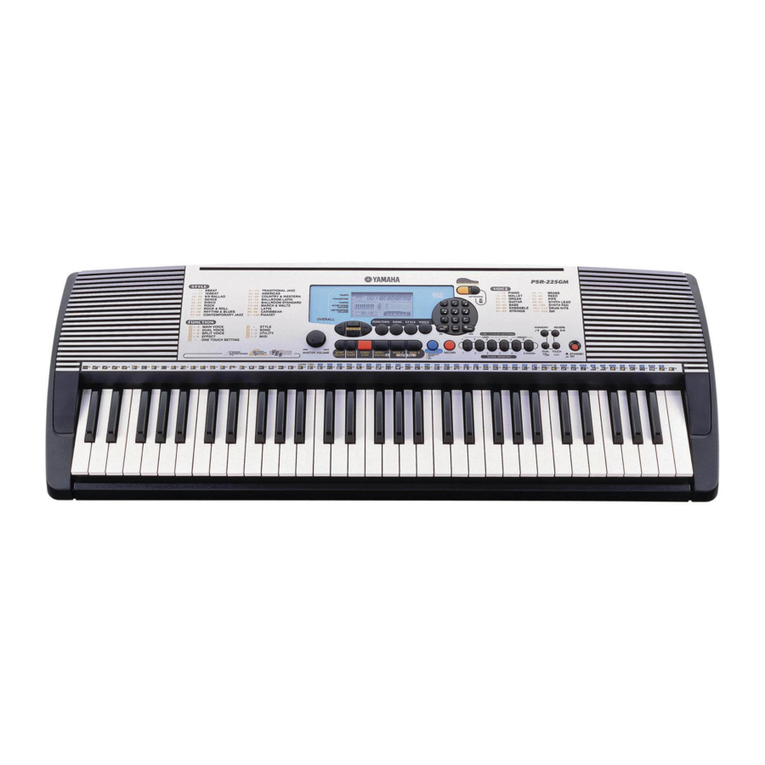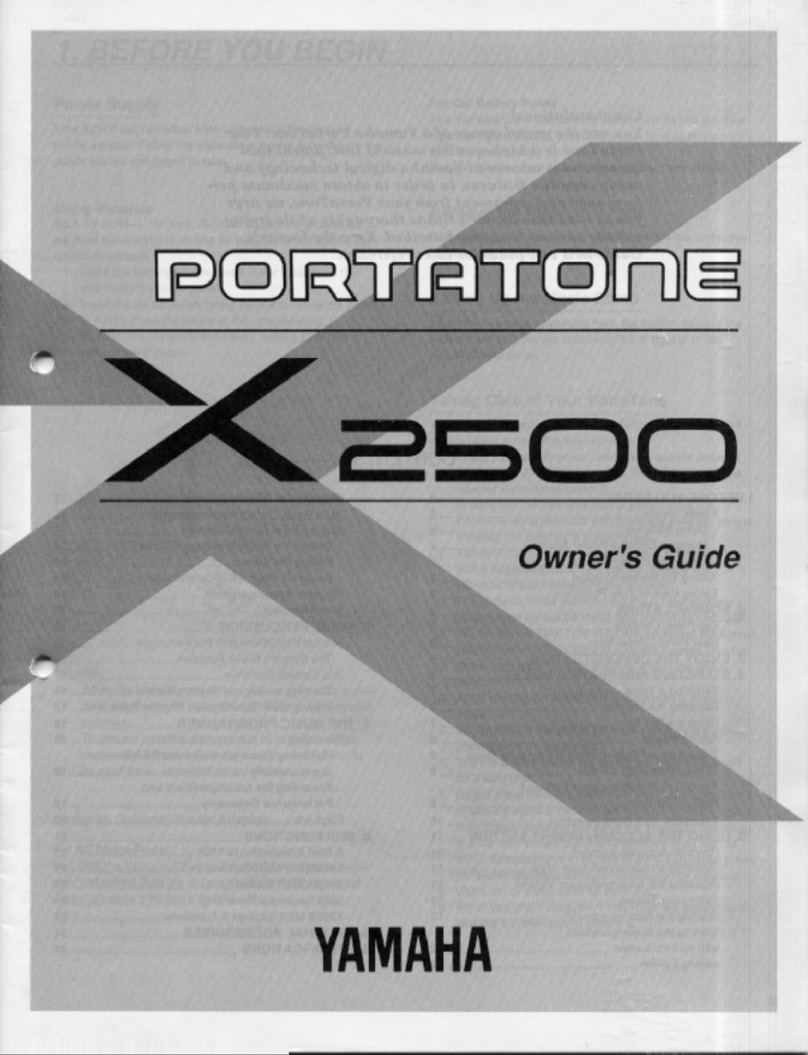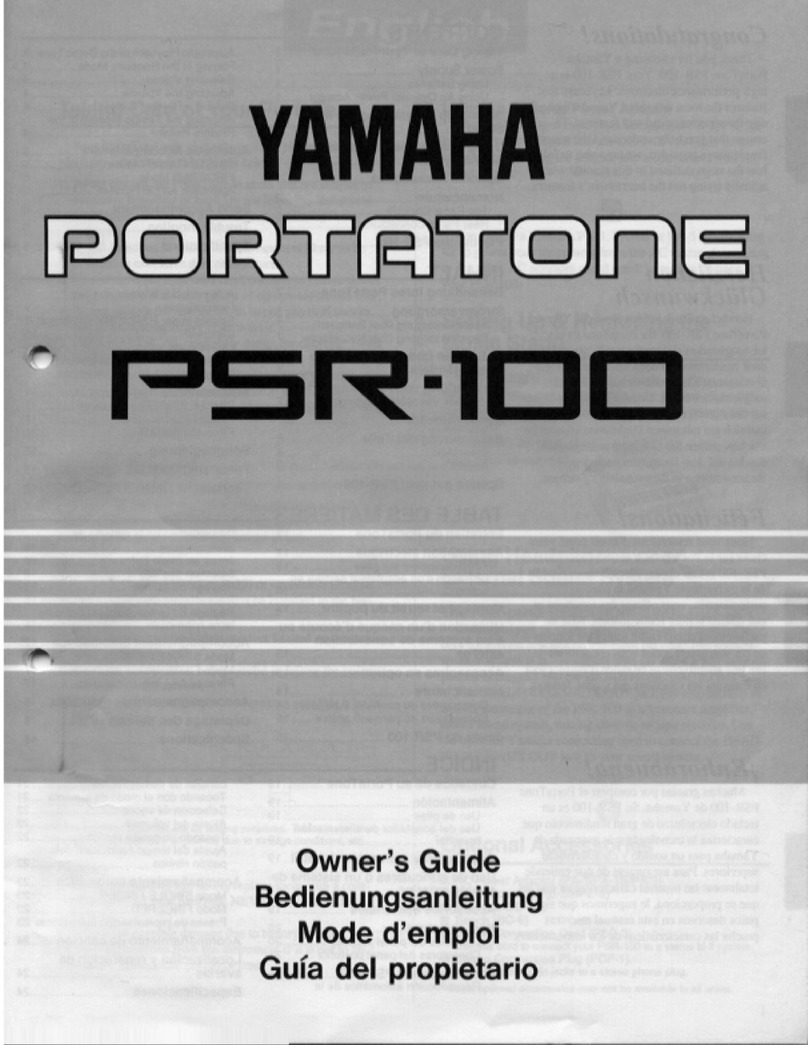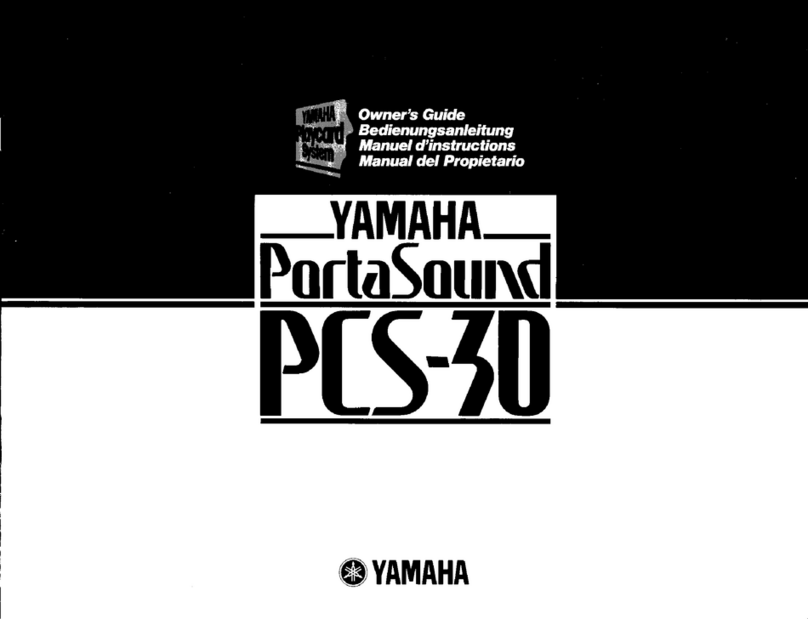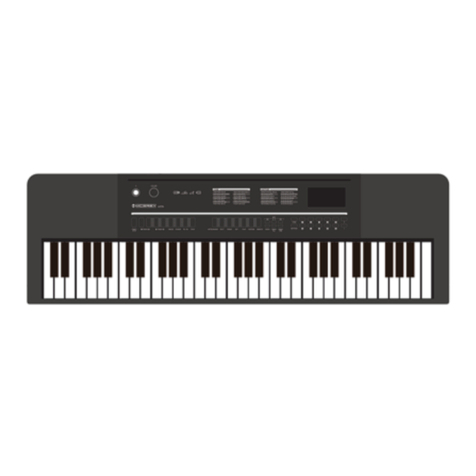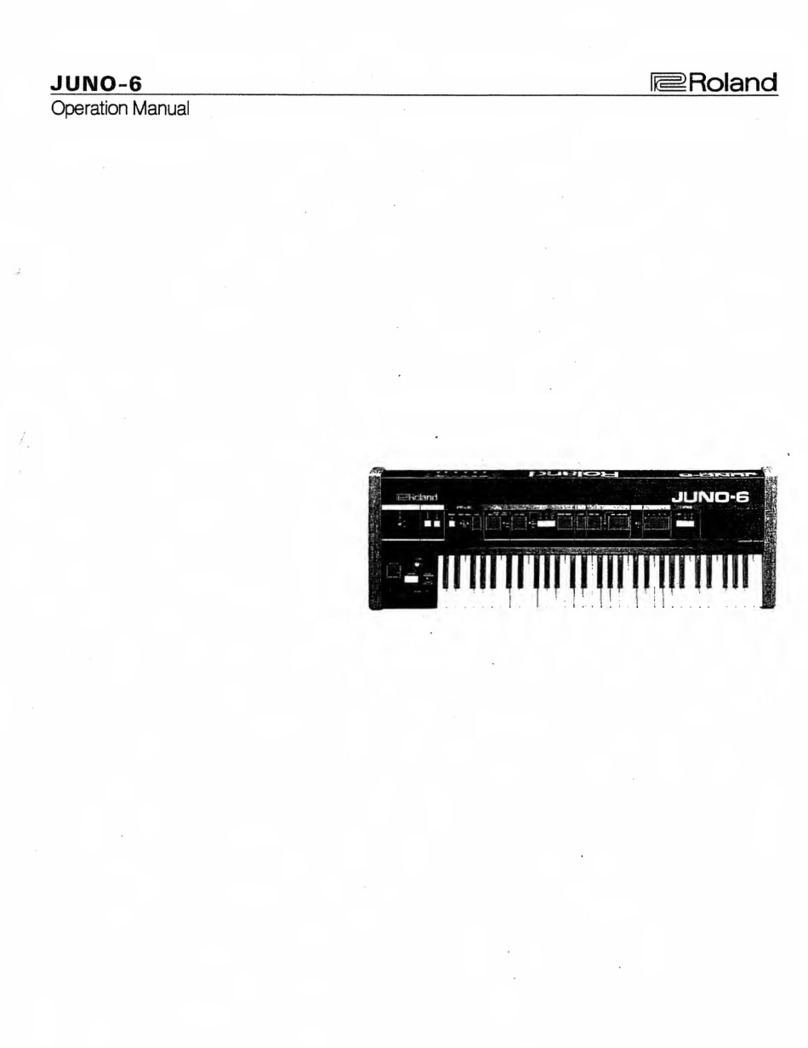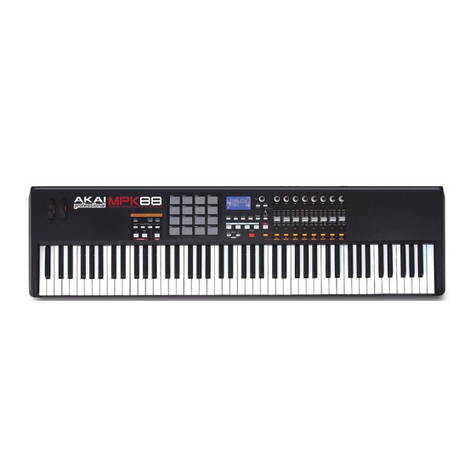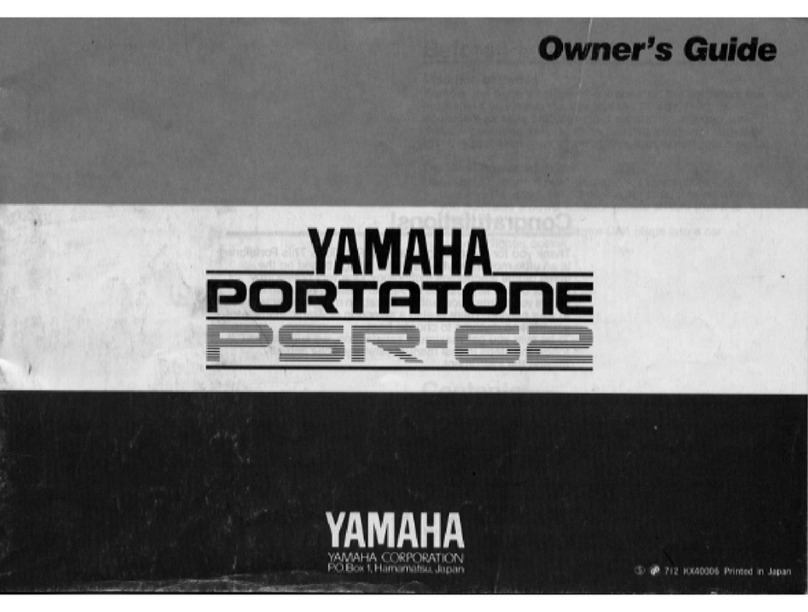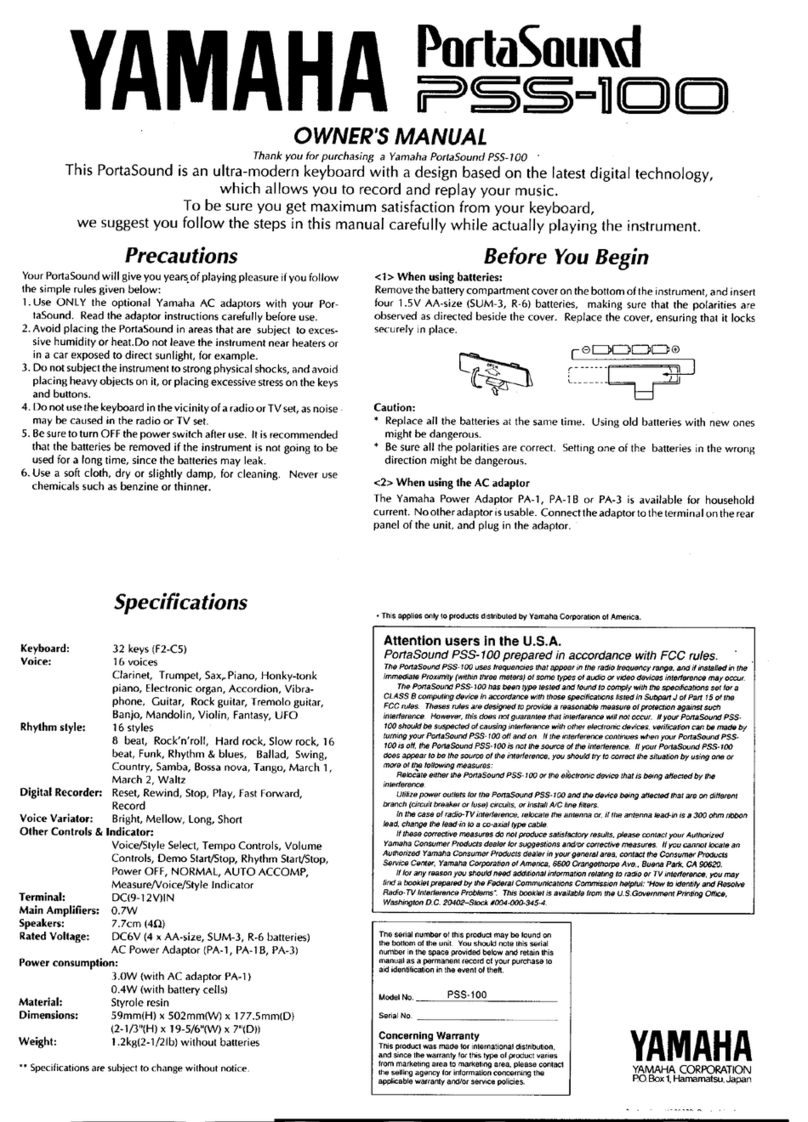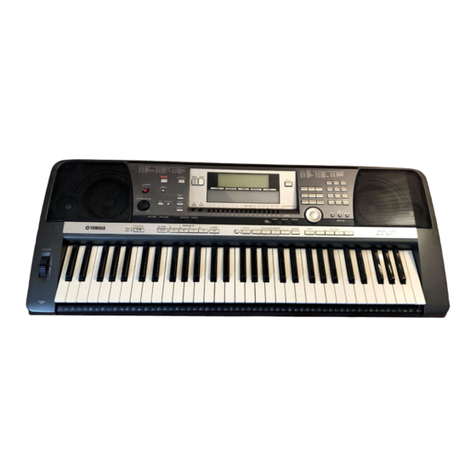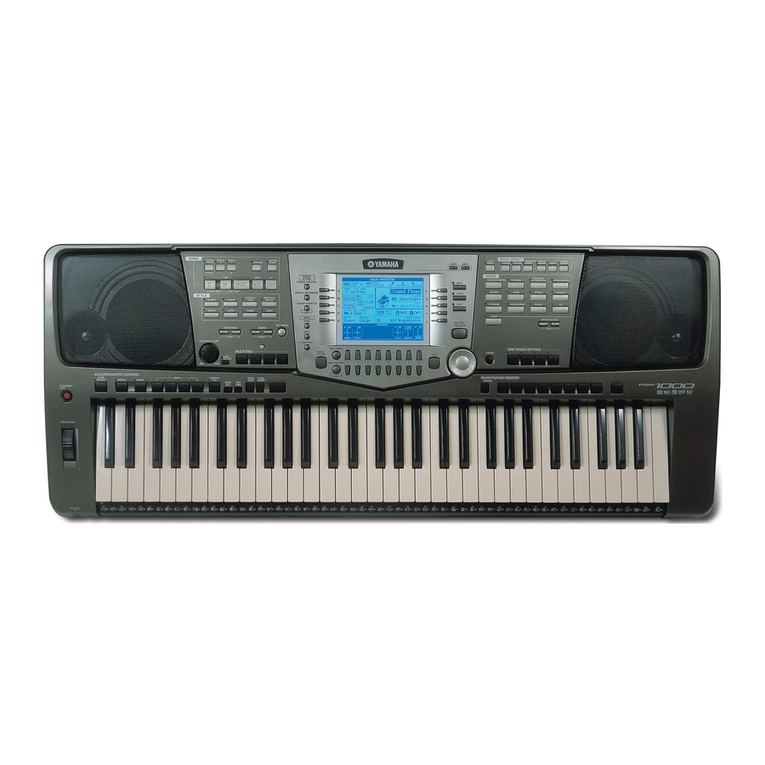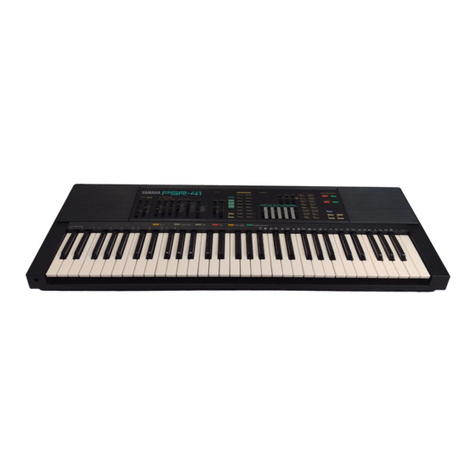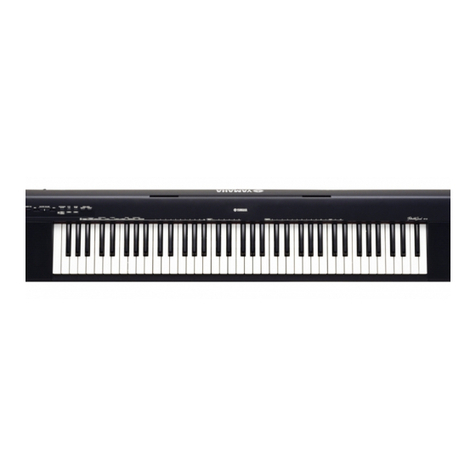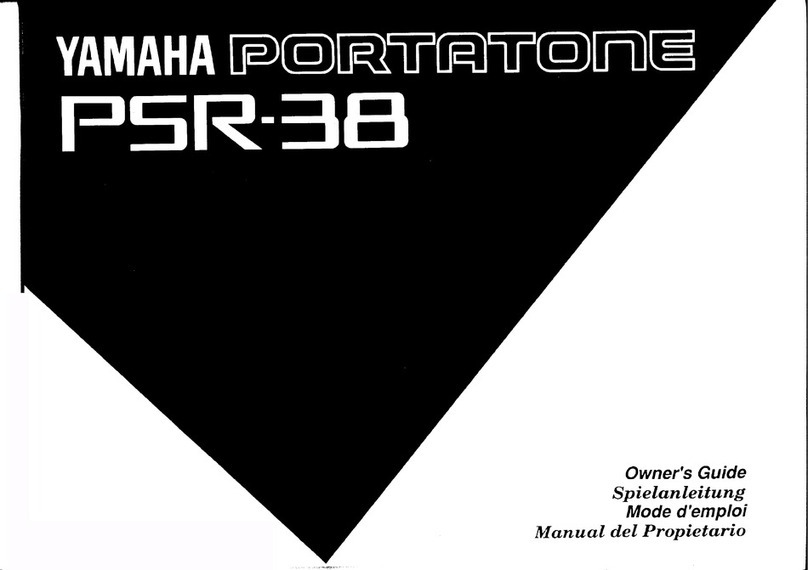
— 2 —
SPECIFICATIONS
GENERAL
Keyboard: 61 standard-size keys, 5 octaves (with touch response on/off; ExLight/
Light/Normal/Heavy touch)
Tones: 232 (128 General MIDI, 64 variation, 8 drum, 32 user); with layer and
split
Rhythm instrument tones: 53
Polyphony: 32 notes maximum (16 for certain tones)
Digital effects: 10 (REVERB 1, 2, 3; CHORUS; TREMOLO; PHASE SHIFTER; OR-
GAN SPEAKER; ENHANCER; FLANGER; EQ LOUDNESS)
Auto accompaniment
Rhythm patterns: 110 (100 + 10 user rhythms)
Tempo: Variable (226 steps, = 30 to 255)
Chords: 3 fingering methods (CASIO CHORD, FINGERED, FULL RANGE
CHORD)
Rhythm controller: Start/Stop, Intro, Normal/Normal Fill-In, Variation/Variation Fill-In,
Synchro/Ending
Accomp volume: 0 to 127 (128 steps)
One touch presets: Recalls settings for tone, tempo, layer, and Auto Harmonize in accor-
dance with rhythm.
Auto harmonize: Automatic addition of notes that harmonize with melody note in ac-
cordance with specified Auto Accompaniment chords.
Free session
Number of patterns: 100 (Auto Accompaniment function based on preset chord progres-
sions.)
Song sequencer
Songs: 2
Recording tracks: 6 (2 through 6 are melody tracks)
Recording method: Real-time
Memory capacity
(total for two songs): Approximately 4,900 notes
Punch in: Supported
Pattern sequencer
Number of patterns: 10 (Rhythm numbers 100 to 109)
Memory capacity: Approximately 7,000 notes
Elements: Intro, Normal, Variation, Normal Fill-In, Variation Fill-In, Ending
Parts: Chord 1, 2, 3; Bass; Rhythm
Recording method: Real-time
Registration memory
Number of setups: 20 (5 setups ×4 banks)
Memory contents: Tone, Rhythm, Tempo, Split on/off, Split point, Layer on/off,Auto Har-
monize on/off, Mixer settings, Keyboard channel on/off, DSP (digital
effect) on/off, DSP (digital effect) settings, Accompaniment mode,
Touch Response settings, Assignable jack setting, Transpose, Tun-
ing, Pitch Bend range, Sound range shift on/off
Demo tunes: 2
Synthesizer
Parameters: PCM set, amp envelope set, attack rate, release rate, pitch envelope
set, pitch, level, touch sensitivity, pan, filter sensitivity, filter level, trans-
pose
Mixer Channels: 16
Modes: Internal, External, External/Solo, External/Play
Parameters: Program change number, volume, expression, pan, coarse tuning,
fine tuning, Effect Send
MIDI: 16-channel multi-timbre receive, General MIDI Level 1
